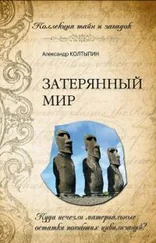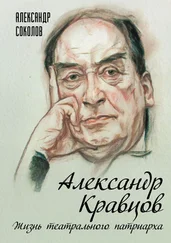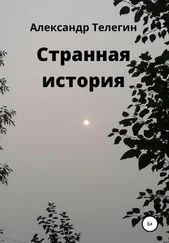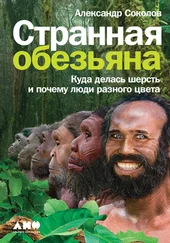12. Соколов А. Б. Из чего сшито пальто ледяного человека // АНТРОПОГЕНЕЗ.РУ. 24.08.2016. http://antropogenez.ru/single-news/article/588/.
13. Соколов А. Б. Неандертальцы были плохими портными? // XX2 век. 15.08.2016. https://22century.ru/allsorts/31315.
14. Carbonell E., García-Antón M., Mallol C., Mosquera M., Ollé A. The TD6 Level Lithic Industry from Gran Dolina, Atapuerca (Burgos, Spain): Production and Use // Journal of Human Evolution (1999), 37: 653–693.
15. Parésa J. M., Arnolda L., Duvala M., Demuroa M., Pérez-González A. Reassessing the Age of Atapuerca-TD6 (Spain): New Paleomagnetic Results // Journal of Archaeological Science (Deс 2013), 40 (12): 4586–4595.
16. Gilligan I. The Prehistoric Development of Clothing: Archaeological Implications of a Thermal Model // Published online (Jan 2010) # Springer Science+Business Media, LLC (2009).
17. Kittler R., Kayser M., Stoneking M. Molecular Evolution of Pediculus humanus and the Origin of Clothing // Current Biology (Aug 2003), 13 (16): 1414–1417. https://www.sciencedirect.com/science/article/pii/S0960982203005074(дата обращения: 15.04.2020).
18. Kittler R., Kayser M., Stoneking M. Molecular Evolution of Pediculus Humanus and the Origin of Clothing // Current Biology (Dec 2004), 14 (24): 2309.
19. Reed D. L., Smith V. S., Hammond S. L., Rogers A. R., Clayton D. H. Genetic Analysis of Lice Supports Direct Contact between Modern and Archaic Humans // PLoS Biology (Nov 2004), 2 (11): e340.
20. Light J. E., Toups M. A., Reed D. L. What’s in a Name: The Taxonomic Status of Human Head and Body Lice // Molecular Phylogenetics and Evolution (2008), 47: 1203–1216.
21. Соколов А. Б. Дом-0. Древнейшая история жилищ. Часть I // XX2 век. 18.08.2015. https://22century.ru/popular-science-publications/history_of_housing1.(дата обращения: 15.04.2020).
22. Moore J. D. The Prehistory of Home. Berkeley: University of California Press, 2012, р. 288.
23. Lumley H. de. A Paleolithic Camp at Nice // Scientific American (1969), 220: 42–50.
24. Villa P. Terra Amata and the Middle Pleistocene Archaeological Record of Southern France. Berkeley: University of California Press, 1983, р. 303.
25. Moore J. D. The Prehistory of Home. Berkeley: University of California Press, 2012, р. 288.
26. Demay L., Pean S., Patou-Mathis M. Mammoths Used as Food and Building Resources by Neanderthals: Zooarchaeological Study Applied to Layer 4, Molodova I (Ukraine) // Quaternary International (2012): 212–226, 276–277.
27. Roebroeks W., Villa P. On the Earliest Evidence for Habitual Use of Fire in Europe // PNAS (Mar 2011).
28. Соколов А. Б. В течение 700 тысяч лет люди в Европе не использовали огонь // АНТРОПОГЕНЕЗ.РУ. 17.03.2011. http://antropogenez.ru/single-news/article/70/.
Глава 6. А паразиты — никогда
1. Schedl W. Contribution to Insect Remains from the Accompanying Equipment of the Iceman. // Bortenschlager S., Oeggl K. D. The Iceman and his Natural Environment. New York, 2000, p. 151–155.
2. Belt T. The Naturalist in Nicaragua. London: Published by J. M. Dent & Sons Ltd. and in New York by E. P. Dutton & Co., 1874.
3. Стандарт мексиканской голой собаки // Сайт питомника мексиканских и перуанских голых собак Sonderwol Legend. 13.10.2010. https://www.sonderwol.com/standard/стандарт-мексиканской-голой-собаки/(дата обращения: 15.04.2020).
4. Darwin C. The Descent of Man, and Selection in Relation to Sex. New York: D. Appleton and Company, 1889, p. 57.
5. Lehmann T. Ectoparasites: Direct Impact on Host Fitness // Parasitology Today (1993), 9 (1).
6. Booth D. T., Clayton D. H. and Block B. A. Experimental Demonstration of the Energetic Cost of Parasitism in Free-Ranging Hosts // Proceedings of the Royal Society of London. B (1993): 125–129, 253.
7. Даррелл Д. Гончие Бафута. — М.: Центрполиграф, 2002.
8. Rantala M. J. Human Nakedness: Adaptation against Ectoparasites? // International Journal for Parasitology 29 (1999): 1987–1989.
9. Sutherland C. The Parasites of Homo sapiens — an Annotated Checklist of the Protozoa, Helminths and Arthropods for Which We Are Home // Parasite Immunology (2003), 25: 401.
10. Ashford R. W. Parasites as Indicators of Human Biology and Evolution // Journal of Medical Microbiology (2000), 49 (9): 771–772.
11. Tunga penetrans // Wikipedia. https://en.wikipedia.org/wiki/Tunga_penetrans.
12. Buckland P. C. and Sadler J. P. A Biogeography of the Human Flea, Pulex Irritans L. (Siphonaptera: Pulicidae) // Journal of Biogeography (Mar 1989), 16 (2): 115–120.
13. Hassanloo Z., Fenton M. B., DeLaurier J. D., and Eger J. L. Fur Increases the Parasite Drag for Flying Bats // Canadian Journal of Zoology (1995), Vol. 73.
14. Энциклопедия пилота. — М.: Редиздат ЦС Союза Осоавиахим СССР, 2011.
15. Rantala M. J. Evolution of Nakedness in Homo sapiens // Journal of Zoology (2007), 273: 1–7.
16. Pagel M. and Bodmer W. A Naked Ape Would Have Fewer Parasites // Proceedings of the Royal Society of London. B . (Aug 2003), 270.
17. Hamilton W. D., Zuk M. Heritable True Fitness and Bright Birds: a Role For Parasites? // Science (Oct 1982), 218 (4570): 384–7. https://www.ncbi.nlm.nih.gov/pubmed/7123238.
18. Thompson C. W., Hillgarth N., Leu M., and Mcclure H. E. High Parasite Load in House Finches (Carpodacus Mexicanus). Is Correlated with Reduced Expression of A Sexually Selected Trait // American Naturalist (Feb 1997), 149 (2).
19. Moller A. P., Christe P. and Lux E. Parasitism, Host Immune Function, and Sexual Selection // Quarterly Review of Biology (Mar 1999), 74 (1).
20. Schalk G. and Forbes M. R. Male Biases in Parasitism of Mammals: Effects of Study Type, Host Age, and Parasite Taxon // Oikos (Feb 1997), 78 (1): 67–74.
21. Prokop P., Rantala M. J., Usak M., Senay I. Is a Woman’s Preference for Chest Hair in Men Influenced by Parasite Threat? // Archives of Sexual Behavior (2013), 42: 1181–1189.
22. Rantala M. J., Pölkki M., Rantala L. M. Preference for Human Male Body Hair Changes Across the Menstrual Cycle and Menopause // Behavioral Ecology (Mar — Apr 2010), 21 (2): 419–423.
Читать дальше
Конец ознакомительного отрывка
Купить книгу
![Александр Соколов Странная обезьяна [Куда делась шерсть и почему люди разного цвета] обложка книги](/books/396704/aleksandr-sokolov-strannaya-obezyana-kuda-delas-sh-cover.webp)









